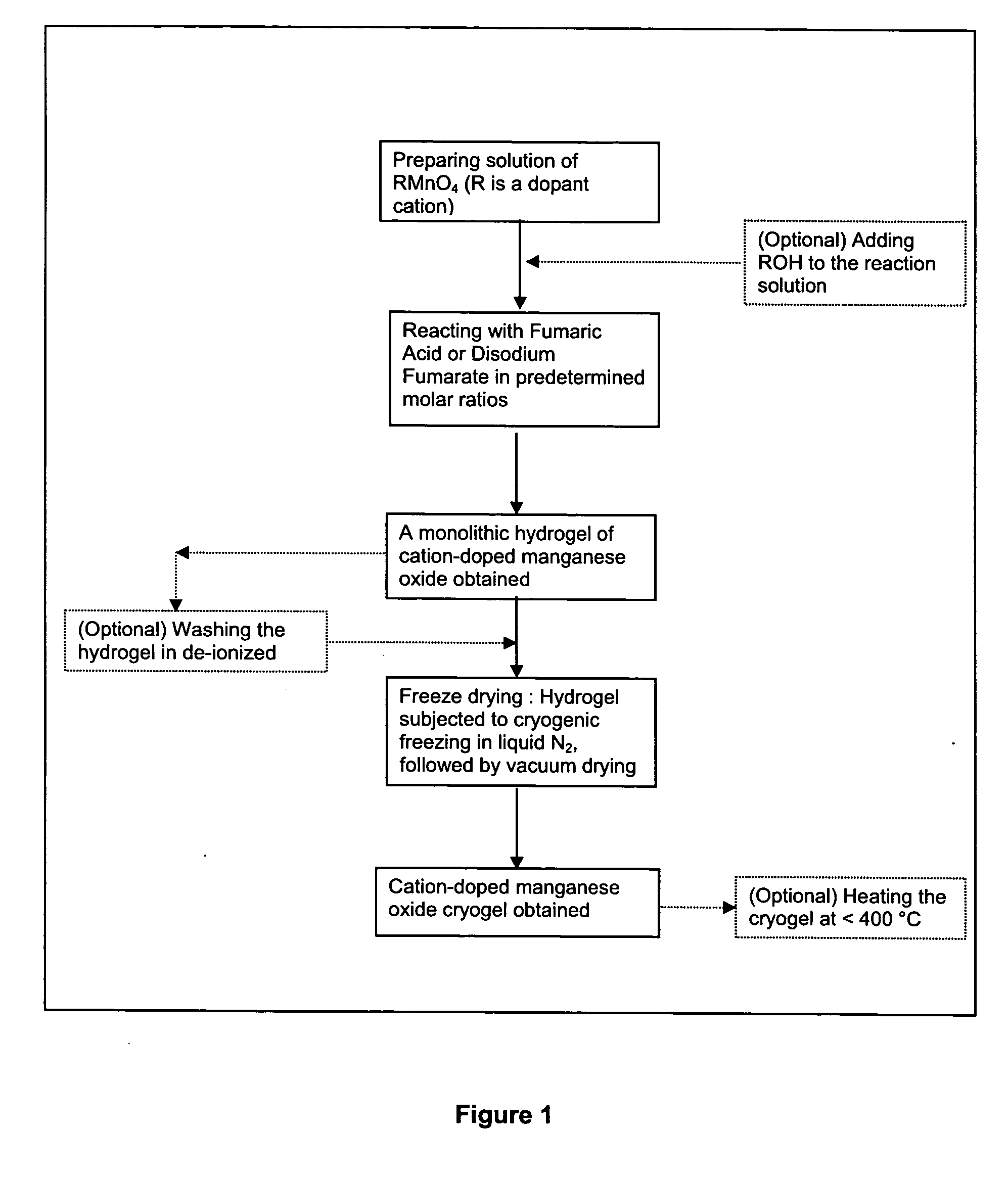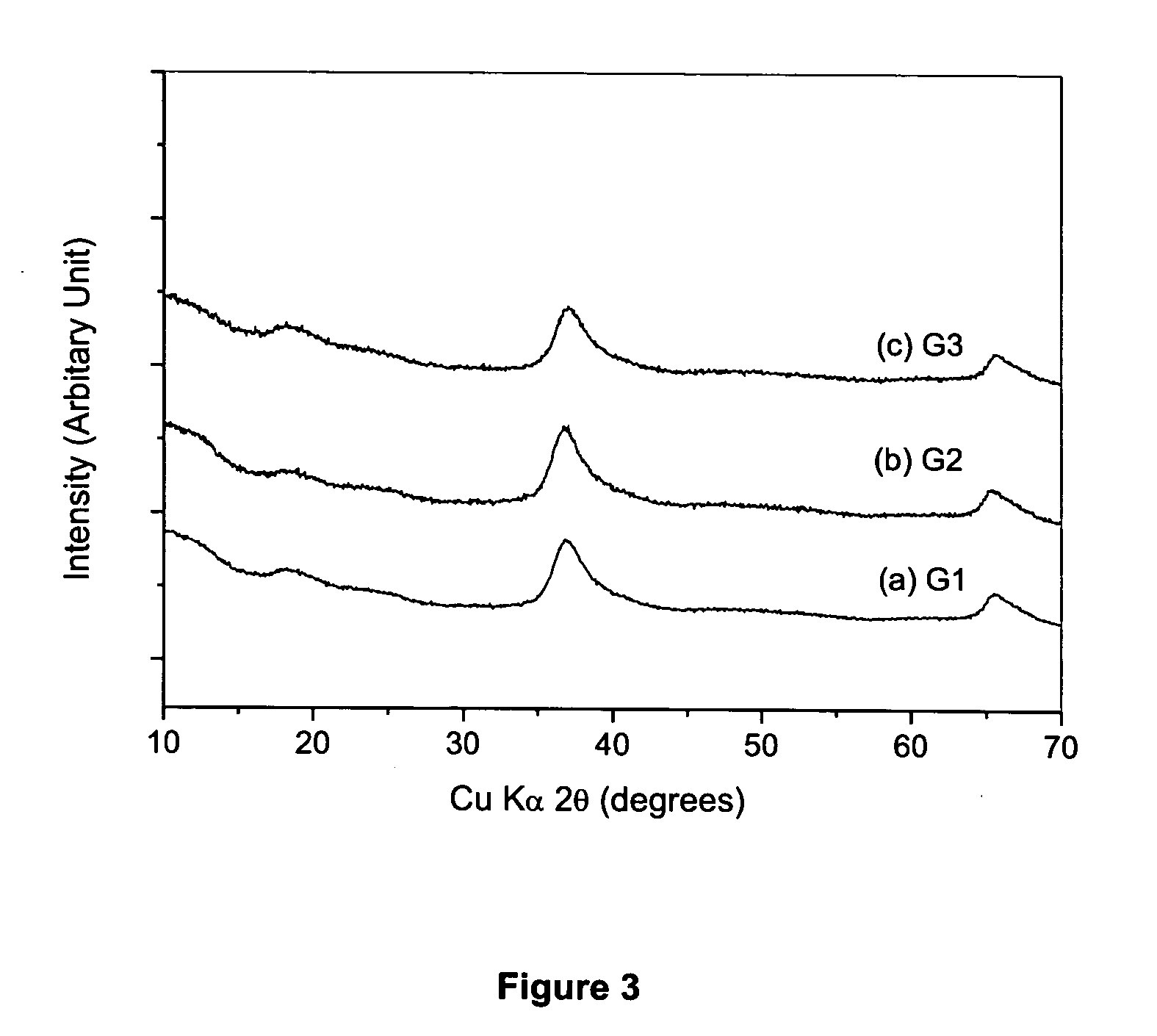Manganese oxide based materials as ion intercalation hosts in lithium batteries
a technology of host materials and manganese oxides, applied in the direction of manganese oxides/hydroxides, manganates/permanentates, cell components, etc., can solve the problems of limited intercalation capacity, significant capacity fading, similar performance limitations, etc., to enhance the electrochemical properties and performance of materials, improve the stability of specific capacity, and enhance the effect of uniform concentration
- Summary
- Abstract
- Description
- Claims
- Application Information
AI Technical Summary
Benefits of technology
Problems solved by technology
Method used
Image
Examples
example
Synthesis of an Amorphous Nanostructured Sodium Containing Manganese Oxide
[0060] A first solution of sodium permanganate solution, 300 mL of 0.25 M NaMnO4 was prepared. While the first solution was being vigorously stirred, a second solution, 75 mL of 0.300 M fumaric acid disodium salt C2H2O4Na2 was gradually added. The resulting mixture was allowed to react and form a monolithic hydrogel. The resulting hydrogel was washed multiple times in deionized water and was cryogenically frozen in liquid nitrogen. Lastly, the frozen gel was freeze-dried to yield a sodium containing amorphous nanostructured manganese oxide cryogel.
PUM
| Property | Measurement | Unit |
|---|---|---|
| temperature | aaaaa | aaaaa |
| temperature | aaaaa | aaaaa |
| time | aaaaa | aaaaa |
Abstract
Description
Claims
Application Information
 Login to View More
Login to View More - R&D
- Intellectual Property
- Life Sciences
- Materials
- Tech Scout
- Unparalleled Data Quality
- Higher Quality Content
- 60% Fewer Hallucinations
Browse by: Latest US Patents, China's latest patents, Technical Efficacy Thesaurus, Application Domain, Technology Topic, Popular Technical Reports.
© 2025 PatSnap. All rights reserved.Legal|Privacy policy|Modern Slavery Act Transparency Statement|Sitemap|About US| Contact US: help@patsnap.com



